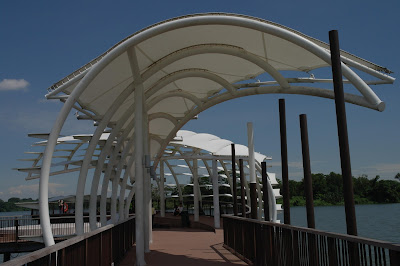Hi, we are Secondary 2 students from Anglican High School. Our class, 2B, visited Lower Seletar Reservoir on 24 March 2012 (Singapore World Water Day). We were split into groups of 10 and took part in the Learning Trail at Lower Seletar Reservoir. Being led by our group leader, Jun Yuan, our group consisted of Calla, Xin Yi, Esther, Cheryl, Pamela, Jin Yi, Yong Shen and Kang Wei. We actively participated in this Learning Trail and have learnt much about the Singapore Water Story. We would like to pen down what knowledge we have gained from the trail as well as express our feelings onto this blog. Please enjoy!! :)
- Lai Jun Yuan, leader of 2B Team Macritchie
Group Photo! :)
























